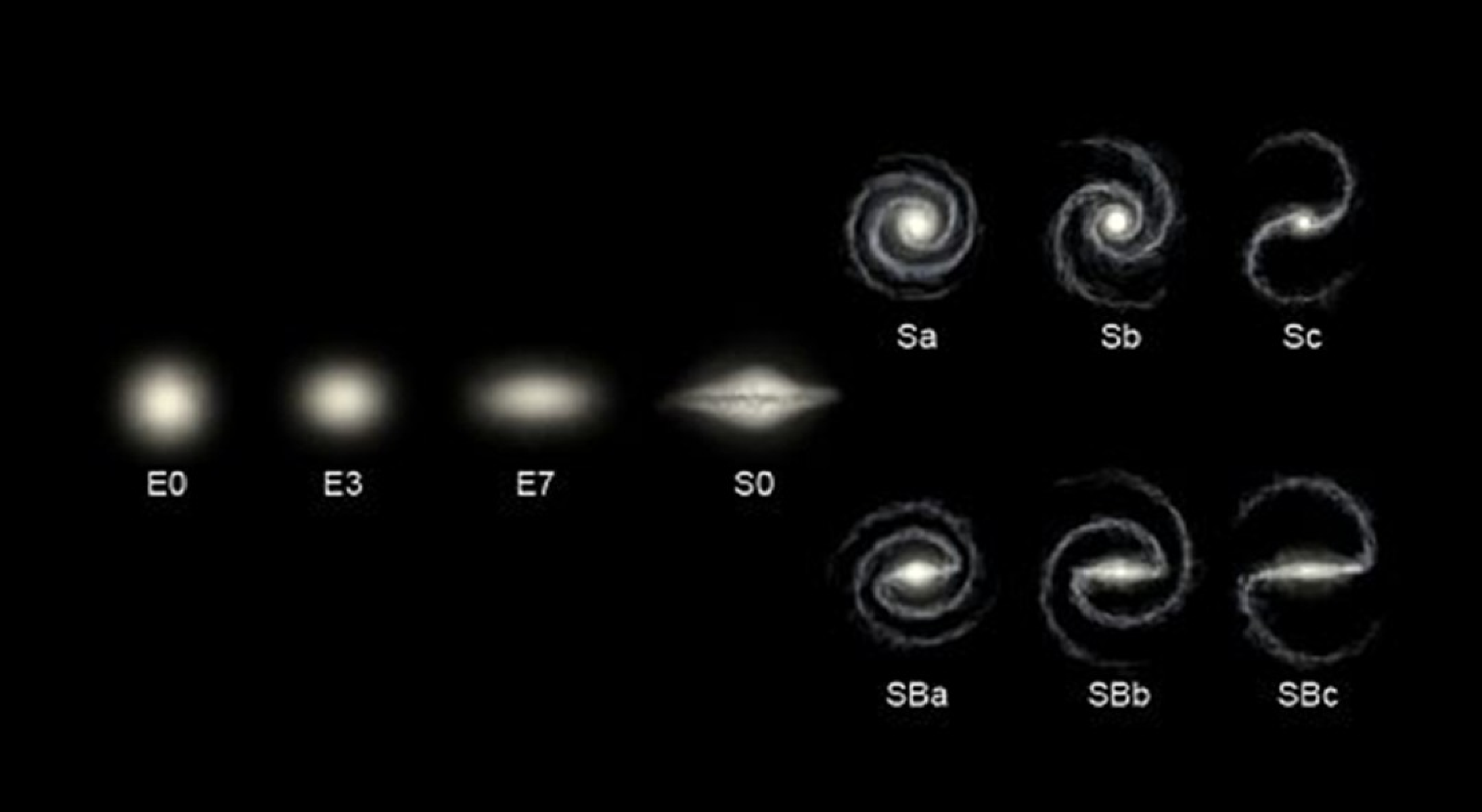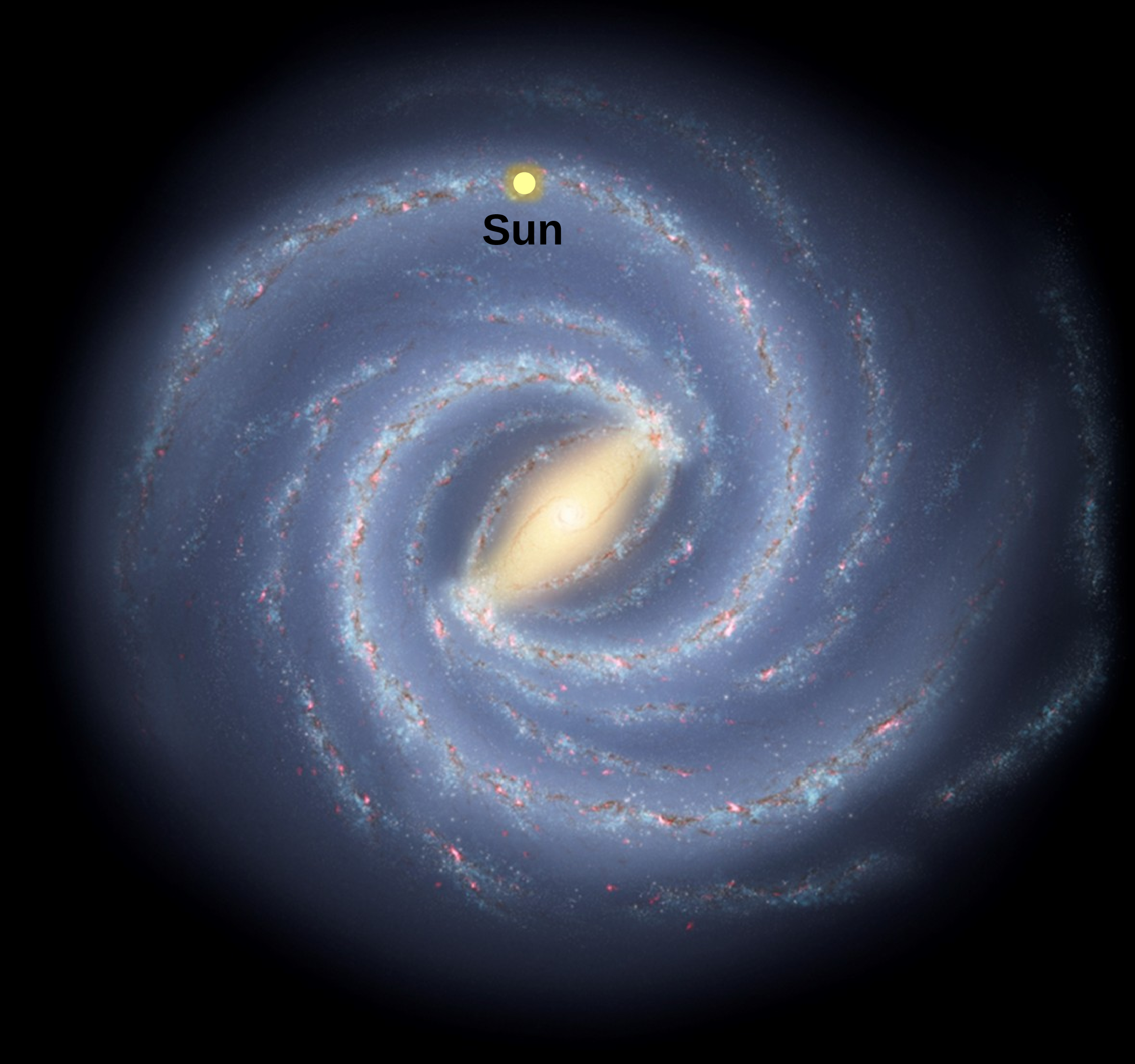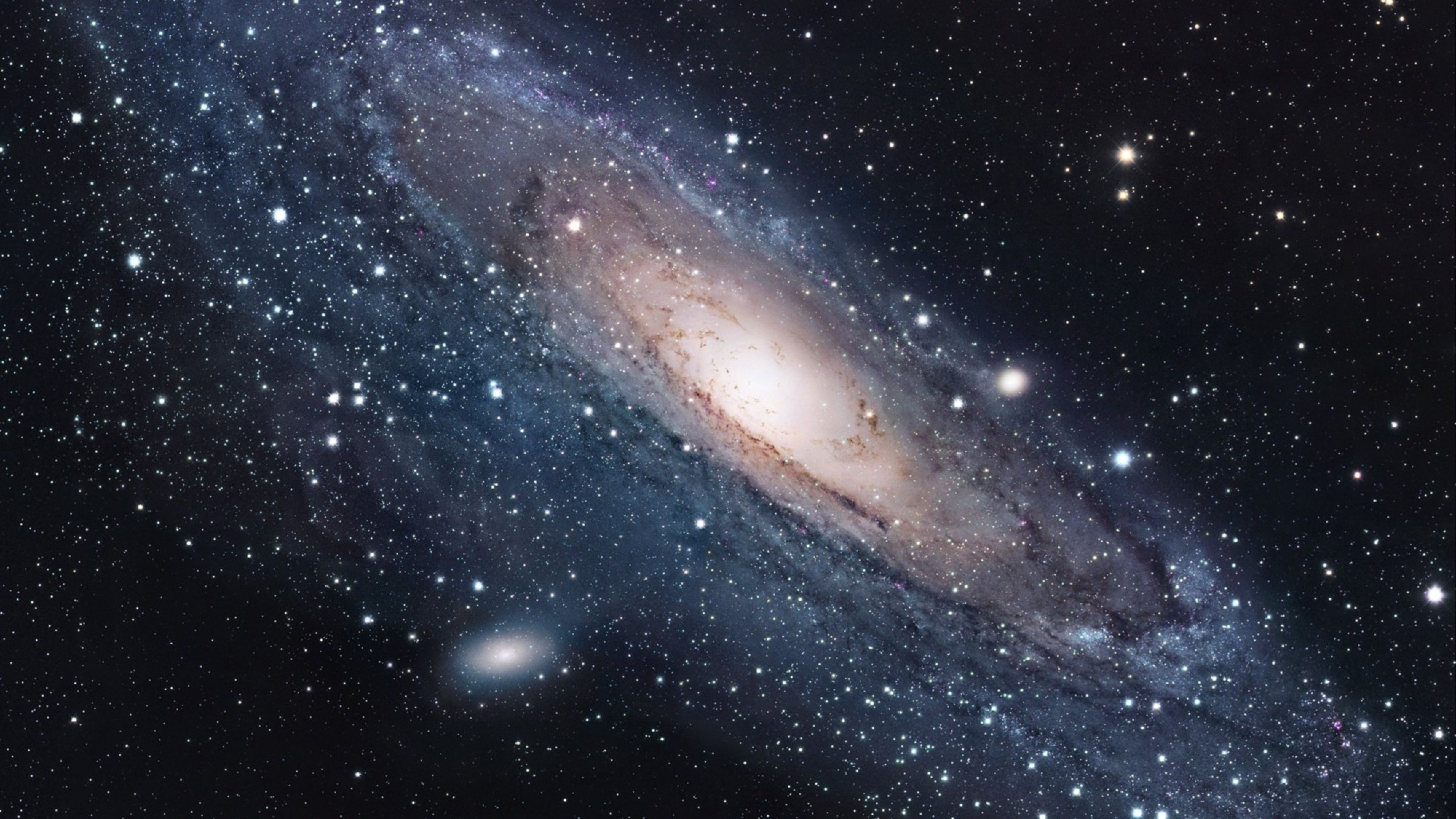Section 14.1 Galaxies

1
solarsystem.nasa.gov/resources/285/the-milky-way-galaxy/

2
wallup.net/galaxy-nasa-space-andromeda/A galaxy is a massive system of stars, gas, dust, and other celestial objects that are held together by gravity. Galaxies come in a variety of shapes and sizes [Figure 14.1.1.(a)], ranging from small dwarf galaxies to giant elliptical galaxies. The Milky Way, which is the galaxy that contains our solar system, is a barred spiral galaxy with a diameter of approximately 100,000 light-years and contains hundreds of billions of stars. Galaxies are the building blocks of the universe, and studying them can provide insights into the evolution and structure of the cosmos.
Galaxies are typically found in groups or clusters, which are collections of galaxies that are held together by gravity. There are several types of groups of galaxies, including:
- Galaxy Groups: These are the smallest groupings of galaxies, consisting of a few (typically 2 to 50) galaxies that are gravitationally bound to one another. These groups often contain a central dominant galaxy, which is surrounded by smaller satellite galaxies.
- Galaxy Clusters: These are larger groupings of galaxies, consisting of dozens to hundreds of galaxies that are gravitationally bound to one another. Galaxy clusters are often dominated by a few large galaxies at their centers and are surrounded by smaller satellite galaxies.
- Superclusters: These are even larger groupings of galaxy clusters, consisting of dozens to hundreds of galaxy clusters that are gravitationally bound to one another. Superclusters are some of the largest known structures in the universe, with sizes of up to hundreds of millions of light-years.
